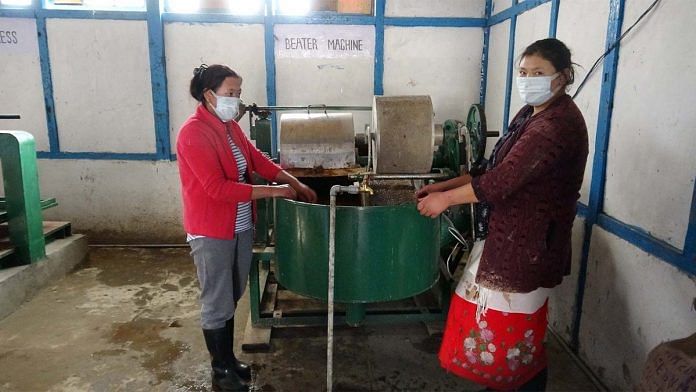New Delhi: Arunachal Pradesh has revived its indigenous 1,000-year-old handmade paper industry that was driven to extinction about a century ago. Known as Monpa handmade paper, it was an integral part of the local custom and culture in Tawang before it was taken over by paper imported from China.
The Khadi and Village Industries Commission (KVIC) had last week commissioned a Monpa handmade paper making unit in Tawang. Work on setting up the industry had been going on for six months and one of the most difficult tasks was to transport machines through the mountainous terrain and inclement weather conditions in the state.
Called Mon Shugu in local dialect, the paper was earlier used for writing Buddhist scriptures and hymns in monasteries. It is made from the bark of a local tree called Shugu Sheng. The paper had originated in China and gradually travelled to India. Monpa paper was earlier sold to countries like Tibet, Bhutan, Thailand and Japan.
New species of snakehead fish discovered in Meghalaya
A new species of snakehead fish, called Channa aristonei, has been discovered in Meghalaya. It belongs to the genus of a predatory fish in the family Channidae.
Known locally as Dohthli, the fish is a native to freshwater habitats in Asia. It is named after a freshwater enthusiast from Shillong, Aristone M. Ryndongsngi, who was also an MMA fighter earlier.
Ryndongsngi had accidentally discovered the fish in 2017 thinking it was another fish named Channa pardalis. But when he noticed some peculiarities in its morphological characters, Ryndongsngi sent photos of the new species to J. Praveenraj, an expert in Indian snakehead fish.
Praveenraj later confirmed the species to be new and conducted a field trip to Meghalaya in 2019 to pick up a live specimen for study. Another year was taken for the fish’s official description and naming. Snakehead fishes range from 10 to 180 cm. They are edible and are also kept as ornamental fishes.
Mizoram University scientists identify trees that can enhance carbon sinks
Scientists from the Mizoram University have identified chestnut and olive trees that have the potential to speed up fallow regrowth in jhum (or shifting) cultivation sites and enhance carbon sinks.
Shifting cultivation refers to an agricultural system where plots of land are cultivated for a specific period of time and then left fallow to allow nutrients and fertility to rejuvenate.
According to the researchers, olive and chestnut can be collected from the surrounding forests or germinated and planted in jhum fallows to accelerate natural succession.
Uttam K. Sahoo of Mizoram University told Mongabay that fallow age was a key contributor to carbon recovery in the land.
The researchers had measured tree height and girth at four cultivation fallow lands in Ukhrul and Chandel districts of neighbouring Manipur that were left unplanted for 5, 10, 15, and 20 years, and estimated that around 39 to 41 years will be needed for the regenerated fallow to store equal carbon as that of an undisturbed forest.
Film on Assam’s puppet theatre bags 4 top awards at international fest
An Assam college professor bagged four top honours at the Port Blair International Film Festival recently for a film on Assam’s puppet theatre. The film, titled ‘Life In A Puppet’, won the ‘Best Film’ in both national and international categories, ‘Best Director’ and the ‘Best Producer’ awards. As many as 97 films from 50 countries were nominated in various categories at the festival.
Rajen Das, an associate professor of philosophy and a dramatist, directed and produced the movie based on Assam’s puppet theatre and its fading glory.
“This is my first film and the attempt was to portray the predicament of a thriving art form which was once very much part and parcel of tradition and life in the villages and towns of the state, dating back to the 14th century,” Das told The Shillong Times.
He added: “It happened during the lockdown when I thought of using time productively by portraying the art form through the medium of cinema.”
Also read: Assam duo creates tea bags sans the bag by compressing leaves, bud into packets






